THE BEST AERO BIKE WHEELS
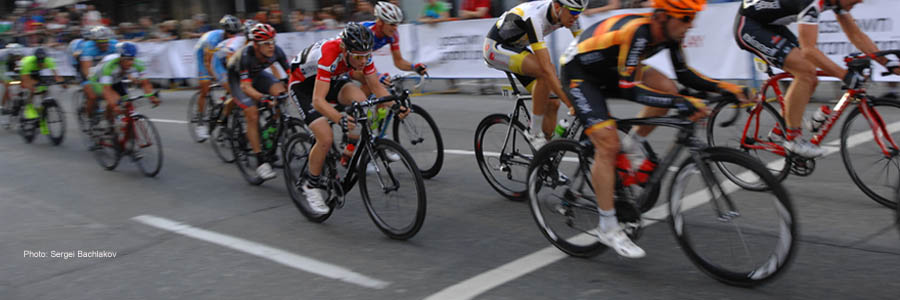
Aero bike wheels look fast, ride fast, and race fast. At roughly 60mm to 80mm deep, they are the wheels of choice for mostly flat terrain for those who ride at average speeds well above 20mph/32kph. They are best suited for time trial and triathlon racing, but some also work well in road races and crits where aero performance is decisive to winning.
For those of us who don’t race but want to go our fastest in training and on competitive group rides, the best aero wheels can give you that extra aerodynamic performance when it’s your turn to pull or sprint for the town line. They provide the stiffness, handling, and comfort you’ll find in all-around wheels 10-20mm shallower while maintaining your speed better than those.
In this post, I review, compare, and recommend some of the best aero bike wheels available today and explain why riders and racers should consider them.
Related: Looking for all-around carbon wheels for your road disc bike? Click Best Carbon Disc Wheelset
Related: Not sure what kind of wheels to get? Click Road Bike Wheels – How To Choose The Best For You
In The Know Cycling is ad-free, subscription-free, and reader-supported. If you want to help keep it rolling without any added cost to you, buy your gear and kit after clicking the store links on the site. When you do, we may earn an affiliate commission that will help me cover the expenses to create and publish our independent, comprehensive, and comparative reviews. Thank you, Steve. Learn more.
BEST PERFORMER – BONTRAGER AEOLUS RSL 62
The Bontrager Aeolus RSL 62 operates best in the aero lane and does it with stability in side winds and comfort across all paved surfaces better than most we’ve reviewed in this category.
Their stiffness, responsiveness, and ability to maintain momentum are on par with other aero bike wheels, while their wider rims handle a 28mm tire without compromising aero performance.
Selling for US$2700/£2200/€2840, you can order the RSL 62 directly from the Bontrager site and Sigma Sports.
Read my full review here.
BEST PERFORMER – ENVE SES 6.7
If TTs and triathlons are your jam or you just like to ride fast where it’s mostly flat, somewhat windy, and on less-than-perfect roads, the SES 6.7 is going to be one of the faster aero and lower rolling resistance wheelset choices and one of two overall best performers in the aero bike wheels category available to you.
On more variable terrain, ones with short, punchy climbs, or in situations where quick accelerations are key to closing or opening gaps, the SES 6.7 would take a lot more work compared to riders around you on shallower, more responsive wheels.
You can order the ENVE SES 6.7 at stores I recommend for US$2850, £3300, €4000 by using these links to Competitive Cyclist, BTD (BikeTiresDirect), Merlin, and Sigma Sports.
Read my full review here.
BEST VALUE – ZIPP 404 FIRECREST

While you can find better-performing aero wheels and lower-priced ones than the Zipp 404 Firecrest Tubeless Disc Brake, it’s the performance-price combination that makes this wheelset the Best Value in the aero bike wheels category.
It’s fast on the flats like its predecessors as you would expect any wheelset with its 58mm rim depth should be.
But, it also climbs and rides across rolling terrain better than most wheelsets 60-65mm deep and as good as some 10mm to 15mm shallower. Add to that its ability to hold its line well in crosswinds, a welcome performance characteristic whether going all out on an exposed flat road or a fast downhill after a good mountain climb.
You can order the Zipp 404 Firecrest wheelset for US$2000, £1700, €1900 using these links to Competitive Cyclist, BTD (BikeTiresDirect), Merlin, Sigma Sports, and BikeInn.
Read my full review here.
WHAT YOU NEED TO KNOW ABOUT AERO BIKE WHEELS
Click on any red statement below to go directly to that part of the post
Find what you're looking for at In The Know Cycling's Know's Shop
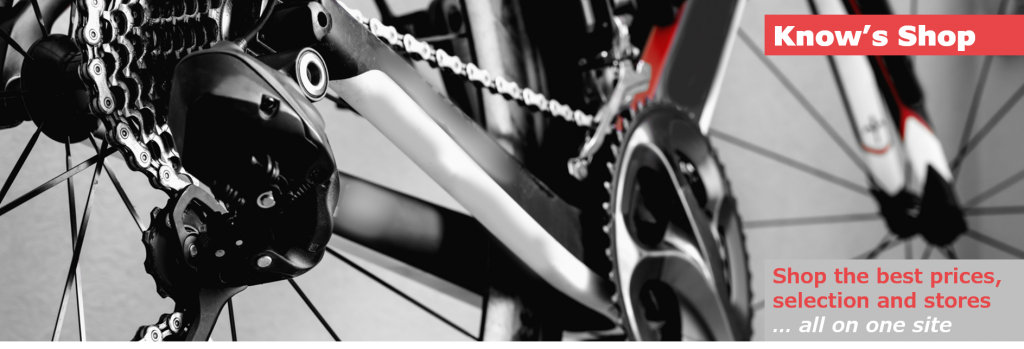
- Compare prices on in-stock cycling gear at 15 of my top-ranked stores
- Choose from over 75,000 bikes, wheels, components, clothing, electronics, and other kit
- Save money and time while supporting the site when you buy at a store after clicking on a link
WHY YOU SHOULD CONSIDER AERO BIKE WHEELS
The world that most cyclists know is flat. Pancake flat for the most part and even flatter than an IHOP pancake in the case of a half-dozen US states, according to researchers. Unless you live in or near the foothills of the Rockies, Sierra Nevada or the Appalachian Mountains, those of us who ride in the United States and Canada are going to be on pretty flat roads most of the time with no more than an occasional and short hill that exceeds a 5% grade.
And despite the wonders of the Alps and other mountain ranges featured in the pro stage races, Europe is mostly flat too. The European Plain, which runs from the Pyrenees along the Spanish and French border all the way to the Ural Mountains in Russia, “gives Europe the lowest average elevation of any continent,” according to no less authority than the Encyclopedia Britannica.
Australia, New Zealand, and the South Pacific? Pretty much flat, flat, and flat. The Sydney Morning Herald reported that “after more than four years” of work, the final topographic maps, covering Australia, New Zealand, and more than 1000 Pacific, Indian, and Atlantic Ocean islands” developed from radar data taken by the space shuttle showed that “Australia was the flattest continent in the world.”
As for the mountains, I’m told by some well-placed elves that only 12% of the world’s population actually lives there.
So why do so many of us look to buy (and read my post recommending) climbing wheels? Perhaps it’s because many of the most famous cyclists going back to icons Eddy Merckx and Fausto Coppi to modern-day heroes like Pogacar, Vingegaard, and Evenepoel conquer the cycling world by climbing mountains.
And why do we focus so much on wheelset weight when choosing between them? Perhaps because weight is one of the most quantifiable differences between wheels. Yet for most riders, reducing our own body weight by 2.5kg or 5lbs would save us a whole lot more in both road time and pocket change than replacing our stock wheels with a good set of climbing ones.
If you are a serious regular cyclist or what I call a road cycling enthusiast, you need to focus on aerodynamics and aero wheels, two things that are critical to cycling fast on the mostly flat earth we ride.
Weight only matters when you are accelerating and when you are going up steep hills and climbs beyond 7% or 8%. But, as explained above, the weight that matters most is your body weight and how much power you can crank out relative to your weight. Your bike and wheelset weight have little relative effect when accelerating and climbing until you are super fit, well-trained, and looking for incremental gains.
Unlike weight, your aerodynamics almost always matters except when you are drafting off someone in front of you or slowly going up steep grades. And the faster you go, the more aerodynamics matters. Aerodynamics matters even more than weight when you are accelerating, though the measured difference between the two is marginal.
If you regularly average about 20mph/32kph and faster on your rides, aerodynamics matters a lot and can save you minutes on a 50 mile/80K ride based on how you position yourself on your bike and what gear (wheels, frame, tires) and kit (helmet, jersey, etc.) you use.
If you are averaging anywhere near 25mph or 40kph on your road rides and races, you are leaving a lot of time on the clock and drag on the road if you aren’t locked into what better aerodynamics can be doing to save you time and power.
The chart below summarizes this; my posts on how to ride faster with better training and technique and gear and kit go into more detail on the role of aerodynamics.

So if you want to go faster, an aero wheelset is part of what will make it happen.
But aren’t aero bike wheels just for time trialists and triathletes, those poor fools that bend over with their hands out in aero bars for miles at a time, not having to worry about making any sharp turns, with no other riders near them to maneuver around, and going so ridiculously fast that those freakishly deep rims they ride on really make a difference?
Yes, deep aero bike wheels are certainly for those riders. They will be on a 60-65mm deep front wheel and an 80mm deep or completely covered disc wheel in the rear. But aero bike wheels, those in the 55mm to 65mm range, are also road racing bike wheels and regular riding wheels for fast roadies riding on flat and moderately rolling terrain.
In 2010 Zipp introduced the 404 Firecrest carbon clincher, a product that changed the direction of high-performance wheelsets of all depths. The Firecrest rim had a rounded “nose” where the spokes attached to the rim and toroid-shaped rim sides. This profile differed greatly from those pointy-nosed, V-shaped ones that deeper rims had at that time. It was also several millimeters wider at the brake track than most other wheels and was 58mm deep.
Testing showed the Firecrest had less aerodynamic drag than much deeper wheels and weren’t buffeted by side winds the way even shallower wheels were. As a bonus, you could actually slow these carbon-rimmed wheels down without growing old, waiting for it to happen, and losing your hearing from all the screeching coming from the braking action.
The Firecrest wheels set a new standard for rim and wheel design.
Most of the leading wheelset companies followed with carbon clincher wheels that emulated the Firecrest 404 shape and depth. Many also introduced triathlon wheels in the 70mm+ range to compete with the Zipp 808 Firecrest for the speed-demon, TT, and triathlon riders. Another group of shallower, 30-45mm deep carbon clinchers also came out for “all-around” riding and climbing led by the Zipp Firecrest 303 and later the 202.
In the last several years, more and more 60-65mm deep, carbon-clincher wheelsets with “blunt” noses or more rounded V or U-shaped rims with 21 and 23mm inside widths and 27mm to 30mm outside widths have been introduced. Tests show these aero bike wheels are nearly as fast as the very deepest triathlon wheels.
The rim profiles have also been refined so that, while affected by sidewinds, the best react in manageable ways rather than getting pushed around so much that you fear getting blown off the road. As they’ve gotten wider, they ride more comfortably and with more rolling efficiency by reducing vibrational rolling resistance in combination with a wider, less inflated tire that still provides a rim-wider-than-tire ratio while remaining laterally stiff and handling well.
Below, I share with you the conclusions I and my fellow evaluators reached after riding many of the best aero wheelsets you can use as racing bike wheels or for riding fast without needing to race. At the end, I also list the aero bike wheels we haven’t reviewed and why.
RATINGS AND REVIEWS OF AERO DISC BRAKE WHEELSETS
Best Performer
BONTRAGER RSL 62 – TRUE AERO BIKE WHEELS WITH A FEW TWISTS
The Bontrager Aeolus RSL 62 operates best in the aero lane and does it with stability in side winds and comfort across all paved surfaces better than most we’ve reviewed in this category.
My fellow testers Nate and Miles rode the RSL 62 and reached some similar and different opinions about them, partly owing to preferences and styles.
Nate rode them first and took some time to get them settled in and adapt to some of the newer aspects of these aero Bontragers. The rear wheel emitted some clicking sounds initially, my guess due to spoke or nipple tensioning issues, but that disappeared after a few rides.
Nate and Miles also found the DT Swiss 240 EXP freehub on the RSL 62 quite loud when coasting, something we all experienced riding this same new hubset on the RSL 51 and a few other wheelsets earlier this year but not to the level of what they heard on the RSL 62.
More significantly, tire pressure, and perhaps tire selection, seemed to affect how well the RSL 62 carried the wheels’ momentum on the road.
The RSL 62’s 23mm internal and 31mm external width on these hooked rims keep most 28mm tubeless tires narrower than the rim for optimum aero performance. Yet at the suggested tire pressure where Nate rode the Bontrager R3 Hard-Case Lite tubeless tires I mounted to these wheels, he was underwhelmed by their cruising speed in the fast group rides he leads.
Miles, perhaps due to his inveterate racer’s mindset, pumped the tires up above the suggested level and found more speed and good maintenance of his momentum once well into the aero-speed realm (22mph/35kph).
Both agreed the Bontrager RSL 62 cut through direct and crosswinds without any issue. And despite their slightly different tire inflation approaches, both also enjoyed comfortable rides with great handling on the wide wheel and tire combination.
Stiffness is another strength of the RSL 62. Miles could translate that characteristic into sprints, where it seemed to him that every watt he put down translated to the wheels that also held the bike right on his line.
Yet neither Nate nor Miles felt the wheelset’s stiffness translated to better than average acceleration and noticed the added effort to take these relatively light wheels (1539 grams with tape but no valves) up even 5% gradient hills.
The RSL 62 are best-ridden fast and probably raced on flat and rolling terrain. Bontrager makes the RSL 51 for more versatile, all-around riding and the RSL 37 for climbing in the mountains.
Selling for US$2700/£2200/€2840, you can order the RSL 62 directly from the Bontrager site and Sigma Sports.
Best Performer
ENVE SES 6.7 – A DEDICATED AERO WHEELSET
There were two areas of questions I especially wanted to answer in our evaluations of the ENVE SES 6.7.
First, how well does it perform against other 60mm or so deep aero bike wheels? If you are looking for a wheelset for mostly flat, fast riding, including time trials or the bike leg of a triathlon, how does the ENVE SES 6.7 rank on the individual performance criteria and overall?
Secondly, how does the SES 6.7, a new model in ENVE’s line, compare with other ENVE wheels of around the same depth or purpose?
ENVE stopped making the SES 5.6, a wheelset I had rated the best performer among all brands of wheels we tested in the aero category, when it started selling the SES 6.7. They also updated the all-around, yet very aero SES 4.5 simultaneously. And ENVE continues to make the unchanged, lower priced ENVE 65 and deeper SES 7.8.
Not long into our first rides, it was immediately clear to fellow tester Nate and me that the ENVE SES 6.7 performs more like wheelsets in the aero category from other brands than the SES 5.6 it replaces in ENVE’s line. Sadly, there’s no sibling resemblance to the responsiveness or versatility that made the ENVE SES 5.6 a standout in this category.
The SES 6.7 holds its speed on flat and rolling terrain well. But to me and the far faster Nate, the SES 6.7 ability to hold its momentum – a surrogate for its aero performance – is indistinguishable from most wheels with similarly deep or even deeper rims we’ve tested.
While I don’t put much stock in wind tunnel data provided by cycling product suppliers as different testing protocols make it hard to compare, even ENVE’s published tests show their SES 6.7 creates somewhere between 1.5 and 4.5 watts less weighted average drag at 30mph/48kph than the selected current or one generation old aero wheelsets they tested from their competitors.
More interesting to me are the comparative wind tunnel results of ENVE’s current SES wheelsets. These showed less than a watt of difference between the 6.7 and 4.5 or 7.8 based on both the weighted average drag and at 0 to 15-degree wind or yaw angles at both 30mph/48kph and 20mph/32kph.
The ENVE SES 6.7 and Bontrager RSL 62 do perform better than other aero wheelsets we’ve tested in their stability and compliance.
While both Nate and I independently noted that the SES 6.7 was sensitive to side winds, the wheel’s response was subtle and gradual. It was almost as if the wheel told me, “I got this,” never changing its direction of feeling fast enough that I felt I needed to react quickly.
For a wheelset this deep (60mm front, 67mm rear), Nate commented that getting pushed around a bit in stronger winds was not unexpected. It seemed reasonable to him that the SES 6.7 would but welcoming that it, like the RSL reacted calmer than other aero bike wheels.
With its wide rims, the 27mm and 28mm tires, once inflated on the SES 6.7, measure up narrower than the 31mm wide front and 30mm rear rims. This rim-wider-than-tire relationship is important to getting that last watt or so of aero performance out of the rim and tire combination.
With other wheels in this category whose outside rim width is 27mm to 28mm, a 25mm or 26mm tire is aerodynamically optimal.
Beyond the aero considerations, I noted that rolling on 27mm ENVE SES and 28mm Continental Grand Prix 5000 S TR made the SES 6.7 wheels “quite pleasant” to ride. I inflated them to around 50psi, given my 148lbs/67kg body weight.
Even at the 65 psi pressure that Nate (155lbs/70kg) pumped them to, he felt “very comfortable” and “totally at home” on the rough, bumpy roads we often ride in New England.
You wouldn’t naturally think that a compliant wheel or rim-tire combination is something a rider looking for ultimate speed would value from an aero-depth wheel or admit to (HTFU!). Yet, we’ve come to realize that wider wheels and tires in the right combination not only make for a more comfortable ride but also make you faster as they reduce your vibrational rolling resistance.
Earlier generation aero bike wheels and even current ones with narrower rims and are more aero with 25mm tires can add vibration loss rolling resistance on all but the best roads that can outweigh the aero benefit of a narrower tire.
Wider rims like those offered by the ENVE SES 6.7 allow for both optimized aero and rolling resistance performance with a 28mm tire.
All of that said, Nate and I concluded that other than for those rolling at 25mph/40kph on relatively flat TT or triathlon courses where you’ve dialed in your position and all the other aero-sensitive aspects of your gear and kit, it’d be hard to justify owning the ENVE SES 6.7 given the option of riding one of the best all-around wheelsets like the SES 4.5.
On more variable terrain, ones with short, punchy climbs, or in situations where quick accelerations are key to closing or opening gaps, the SES 6.7 would take much more work than riders around you on more responsive wheels.
But if TTs and triathlons are your jam or you just like to ride fast where it’s mostly flat, somewhat windy, and on less-than-perfect roads, the SES 6.7 is going to be one of the faster aero and lower rolling resistance wheelset choices and one of two overall best performers in the aero wheelset category available to you.
You can order the ENVE SES 6.7 at stores I recommend for US$2850, £3300, €4000 by using these links to Competitive Cyclist, BTD (BikeTiresDirect), and Merlin.
Best Value
ZIPP 404 FIRECREST – PERFORMANCE FOR LESS
While you can find better-performing aero wheels and lower-priced ones than the Zipp 404 Firecrest Tubeless Disc Brake, it’s the performance-price combination that makes this wheelset the Best Value in the aero wheelset category.
As road disc wheels move into what I’ve identified as their 4th generation, it’s become harder to apply the traditional climber, aero, all-around, etc. labels to describe what type of terrain a wheelset performs best on or what type of rider it would be best suited for.
This latest generation Zipp 404 Firecrest is fast on the flats like its predecessors as you would expect any wheelset with its 58mm rim depth should be.
But, it also climbs and rides across rolling terrain better than most wheelsets 60-65mm deep and as good as some 10mm to 15mm shallower. Add to that its ability to hold its line well in crosswinds, a welcome performance characteristic whether going all out on an exposed flat road or a fast downhill after a good mountain climb.
No, the Zipp 404 Firecrest is not the all-everything wheelset that I and my fellow testers fell madly in love with riding the Zipp 454 NSW. But the 404 is less than half the price of its US$4000/£3200/€3600 upper-crust, heart-throb sibling.
Nor is it the performer across all criteria or as expensive as the US$2850/£3300/€4000 all-around Best Performer ENVE SES 4.5 that excels on flats, rollers, and shorter climbs.
But if you want an aero-category wheelset that performs nearly as well as most on a wide range of road terrain at a price less than many that are best over a narrower range, the Zipp 404 Firecrest is there for you.
As with any wheelset with a deep rim that’s intended for speed, you don’t want to go out and reduce your aero performance by putting a 28mm wide tire on the Zipp 404 Firecrest’s front wheel instead of a 25mm one if you don’t have to. You already get improved comfort and handling thanks to the 404’s added volume and straighter tire sidewalls coming from its 23mm inside width, hookless rims.
Note: If you weigh over 175 lbs, you are better off going with a 28C tire. The recommended inflation pressure for your weight and a 25C tire would put you above the recommended inflation pressure for this rim of 72.5 psi or 5 bar.
While not the plushest or best handling wheels on the block, my fellow tester Miles and I found it’s plenty comfortable enough and handles just fine with our top-rated 25mm wide Bontrager R3 Hard-Case Lite and Schwalbe Pro One TLE tires that we tested on this wheelset. (The discontinued Zipp tires you see in the photos were used only to soothe my aesthetic sensibilities.)
For the Zipp 404 Firecrest, your tires must be tubeless and hookless compatible. And if you are partial to riding 28mm rubber, you can be both aero and comfortable if you are willing to work with me. Put a 25mm tire on the front wheel where aero performance is crucial, and a wider tire adds little extra comfort. Then mount up a 28mm on the rear where aero is less decisive, and you’ll feel the comfort of a wider tire more.
Unlike the hubs used on the Zipp 454 NSW or ENVE SES 6.7 and many other performance-carbon wheelsets these days, the ZR1 freehubs used on the Zipp 303 and 404 Firecrest wheels are loud. They’re just as audible but not as rich sounding as the Chris King or even the Industry Nine hubs you can select or build into some wheelsets.
The freehub noise Miles and I heard may be beautiful music to your ears. Just know that you can’t coast in the wheels of your group ride mates or a competitive race peloton with 404s rolling underneath you without being noticed and likely encouraged to take more than your share of pulls or be more easily marked if you try a breakaway.
But the way this US$2000, £1700, €1900 wheelset performs, your buds may think you’re riding a more expensive set. And with how well you move across all pitches of paved roads, they may think you are fitter than you may actually be.
With the Zipp 404 Firecrest’s performance and its 1521 gram weight per my scale, it’s hard to see a reason to buy a 10-15mm shallower, more typical 40-50mm deep wheelset for so-called all-around riding. The latest Zipp 303 Firecrest falls in that depth range, but my experience suggests it’s better for very hilly terrain and mountain road climbs as an all-arounder.
Certainly, it’s not a budget wheelset. There are many available from established and new brands that sell for less. But the Zipp 404 Firecrest clearly outperforms all of those we’ve tested in that price range. That performance, in my humble opinion, justifies the added spend.
In our experience, this is a wheelset that performs comparably to or better than many aero or all-around ones that cost more and can do so across a mix of terrain that few more expensive wheelsets can.
You can order the Zipp 404 Firecrest using these links to Competitive Cyclist, BTD (BikeTiresDirect), Merlin, Sigma Sports, and BikeInn.
ENVE 65 – AN AERO FOUNDATION
If you’re not all-in on aero but want some aero benefits, the ENVE 65 wheelset provides a solid foundation for aero riding without making a maximal investment.
What is all in? Aero frame, aero components, aero kit, 23-25mph/37-40kph, TT, and crit racers, where every bike length matters.
What is want some aero benefits? Race bike, aero aware, 20mph/32kph and up, fast group rides, occasional races, where going fast on flats and gently rolling terrain matters.
Most aero bike wheels aren’t versatile enough to ride on all terrain. But on the right terrain and in the right riding situations, the best aero wheels make a decisive speed difference when compared to shallower, all-around ones.
 If you want the benefits of the best aero wheelset performance but can’t quite justify the investment, the ENVE 65 will get you close and for a lot less. At US$1400 for the ENVE 65, that’s over US$1000 less than my best-rated aero road disc wheelset performers. ENVE’s pricing outside the US, £1800, €2200, puts them at a far smaller discount in other regions of the world.
If you want the benefits of the best aero wheelset performance but can’t quite justify the investment, the ENVE 65 will get you close and for a lot less. At US$1400 for the ENVE 65, that’s over US$1000 less than my best-rated aero road disc wheelset performers. ENVE’s pricing outside the US, £1800, €2200, puts them at a far smaller discount in other regions of the world.
The ENVE 65 is stiff and compliant. That’s a great combination to have in any wheelset, one that other aero and all-around wheelsets I’ve ridden priced in the same range as the ENVE 65 rarely pull off.
Aero performance is, obviously, the critically important measure of an aero wheelset. While we can’t test them in a wind tunnel, I and my fellow testers Nate and Miles can and have judged and compared how well these and other aero wheels hold their momentum at a range of aero speeds.
Based on those admittedly subjective evaluations, the ENVE 65 is on par with higher-priced aero wheelsets, though slightly off the pace of the best.
It also holds its own or, perhaps better said, holds you reasonably close to your line in crosswinds, better than some and not as well as others in our experience. The ratings and review chart provides specific comparisons on this measure.
The ENVE 65’s 28.3mm outside rim is wider than the tire per my measurements with the ENVE hookless rim compatible and approved/recommended 25mm tubeless tires.
Acceleration, handling, and climbing performance are on par with the average aero disc wheelset in this review but off the pace of the best performers. Whether those performance differences would be noticeable in a flat or rolling TT or crit is debatable. They would if you were to take them on hillier terrain or races with more demanding cornering.
The same ENVE Alloy hub internals engage and roll very well on the road and emit a low-frequency, hollow sound. The 65 uses the Foundation hub shell, only 6 grams heavier than the ones used on ENVE’s SES wheels which are milled to allow for their paired spoke lacing. You can also order the ENVE 65 with a distinctively louder Industry Nine hub if you prefer.
So how do the aero category’s Best Performers compare to the ENVE 65, and is that performance enough to justify the price difference?
The Best Performers are less affected by the crosswinds and can mount 28mm tires to provide more comfort and lower vibration loss rolling resistance without reducing aero performance.
The choice is up to your aero performance id and cycling budget ego to resolve.
You can order the ENVE 65 wheelset at my top-rated stores using these links to Competitive Cycling, BTD (BikeTiresDirect), and Merlin.
REYNOLDS BLACKLABEL AERO 65 DB – STIFF, FAST GLIDERS
If you are looking at an aero wheelset like the Reynolds Blacklabel Aero 65 DB, you should be all about going fast. You likely race and may even live to do so. But you certainly have speed as your top priority, and there’s nothing else in your top 5.
You’re probably doing the whole aero thing – an aero bike, aero position, aero road helmet, racing kit, shaved legs, etc., etc. You don’t care much about things that don’t matter when it’s all about going fast for you. Things like comfort, climbing, and even the occasional crosswind are distractions at best.
If that doesn’t describe what you are looking for, you’re in the wrong aisle (or the wrong review).
If it does, come a little closer, and let me tell you about this Blacklabel Aero 65 DB wheelset from Reynolds.
The bottom line, this is a stiff, fast wheelset. My fellow tester Miles, a P/1/2 crit and road racer who finishes top 10 in his age group at the US Masters Nationals, reported that “once in a full sprint, these wheels just simply fly.”
Riding the Aero 65 DB wheelset enabled him to snap a bunch of sprint-oriented Strava KOMs and make his Giant Propel Advanced SL Disc go about as fast as he thought it could.
Speed comes from a stiff wheelset that responds when you tell it to go with rims that cut through the air on smooth-rolling hubs. That’s the make-up of this wheelset.
The Blacklabel Aero 65 DB uses i9 hubs. They’re louder than most but engage quickly and roll easily. The rims have a V-shaped profile with internal spoke nipples that trades-off crosswind performance and easy spoke tensioning adjustment for straight-ahead lift.
Remember, it’s about the speed with this wheelset. If loud hubs and the need to keep both hands on the bars in the crosswinds isn’t for you, neither are these wheels. They also aren’t the most comfortable wheels at the 75-80psi that Miles rode them at or the 60psi that I did on Continental Grand Prix 5000 TL tires that mounted easily but took a few iterations to seal and hold air.
For these Reynolds wheels, it’s not just about going fast in a sprint or straight line. Both Miles and I experienced the momentum the Aero 65 DB gave us to quickly punch the kind of 100-meter climbs up to about 10% you’ll often find on circuit races. We were also impressed with how well their aerodynamics assisted on extended climbs up to a 5% grade.
Oh, and they corner very well at speed too. While crits and road races are only a dream in the age of Coronavirus, when we tested these wheels, Miles reported he “was able to confidently whip through some corners at around 30mph” in his non-race testing.
I don’t often ride that fast, even on a straight, but when I do, I feel the sensation of gliding along at such pace and with such ease that I could block out the stresses of life around me.
If you’re all about going fast and doing crits and rolling road races and time trials – and everything else be damned – you should consider the Reynolds Blacklabel Aero 65 DB. At US$2300, £1800, €2160, it is also competitively priced among others in the aero wheelset category.
You can get it from Tredz (10% off w/code ITKTDZ10), a store I recommend for its low prices, good selection, and high customer satisfaction ratings.
ZIPP 808 FIRECREST – MISSION SPEED!
Any wheelset that’s 80mm deep, like the latest tubeless, disc-brake Zipp 808 Firecrest, will have an intensely focused mission. Speed!
Your wheels play an important role on the track or in a time trial or triathlon, or any ride on a course with a similar profile where pure speed matters more than shrewd strategy. While not as important as your physiology, fitness, or body position, wheels are one of the equipment choices that matter most, along with your bike, clothing, helmet, bars, and tires.
And when deciding between wheels for these events, aero drag plays the most important role compared to other considerations, including stiffness, weight, comfort, and rolling resistance.
Differences in TT and triathlon courses can and often change how well a given wheelset performs for you. Some courses are quite flat, while others have rollers or a key climb. Some are relatively straight, while others have a lot of turns that can make it quite technical. Regardless of the terrain and turns, some TTs and triathlons fall on days with little to no wind, while others happen in places or at times when there’s always some wind to contend with.
I’m not a triathlete, TT racer, or trackie. And while I like to ride fast, I’m not worthy of a wheelset like the Zipp 808 Firecrest, which hits its stride around 25mph/40kph
Fortunately, my fellow testers Nate and Miles are fast, worthy riders. Nate leads a weekly Bullet Train group ride that averages in that mid-twenties mph, early-forties kph speed range and has done his share of individual and team time trials. Miles is a regular P/1/2 and masters racer who competes regionally and nationally in crits and stage races that include time trials.
They both know high-speed riding and racing and more tactical road racing on flats, hills, and climbs. They each tested the Zipp 808 Firecrests on various fast rides and races. I’ve captured their feedback here.
With the Zipp 808 Firecrest beneath you, you almost immediately feel the wheels holding your speed on the flats even before getting up to race pace. They seem to just roll without too much effort. And once you are cranking in the big gear at aero speeds, they feel like a steamroller. They just go.
But do they roll any faster than a 60-65mm deep aero wheelset in a race or fast ride? Perhaps, but the 808 Firecrest don’t feel like they are dramatically more aero or hold higher speeds with less effort the way going from a 40-45mm all-around to a 60-65mm deep aero set of hoops does.
Nate rode the same time trial with the 808s on his Specialized Venge aero bike and a shallower set of wheels on his more road race-oriented Specialized Tarmac. He finished with essentially the same time at the same average power.
While it’s tough to control for other factors (e.g., differences in temperature, humidity, wind, etc.) and with only two data points, it’s most likely that the rolling terrain of the course limited Nate’s ability to ride at a speed fast enough where the deeper Firecrest would make a difference.
This isn’t inconsistent with what wind tunnel testing of wheels of different depths has shown. It’s a cycling case of diminishing returns; aero drag reduction improvements get smaller as wheels get deeper or as testing speeds get lower.
We used 28mm Continental Grand Prix 5000 S TR tubeless tires with sealant for all of our testing. That’s the width that Zipp recommends to optimize the 808 Firecrest’s aero performance and the tire that independent tests have found to have among the lowest rolling resistance of tubeless tires that use a puncture belt.
The wheels themselves measure 1673 grams on my scale, including rim tape, valves, and an XDR freehub. Both the front and rear wheels average 23.3mm inside and 27.4mm maximum outside width measured at a half dozen places on each wheelset.
Aerodynamically, 28mm tires on 27.4mm width rims go against the rim-wider-than-the-tire principle. Inflated both to 60psi and 80psi (the latter pressure above the recommended ETRTO recommended 5 bar/72.5psi limit for hookless rims like the 808), four of the best tubeless tires with puncture belts I recommend come in between 29.7mm and 30.7mm wide per my measurements on these wheels. (The fifth isn’t made in 28mm width.)
So why use a 28mm tire instead of a 25mm one that would set up much narrower on the rim?
While we’ve ridden 25mm tires on the Zipp 404 Firecrest and Zipp 454 NSW wheelsets that have similar inside and outside width dimensions to the 808 Firecrest for just this reason, that was before Zipp published their hookless road tire compatibility chart.
And of the best tubeless tires with puncture belts that I recommend – Conti GP 5K S TR, Schwalbe Pro One TLE, Specialized S-Works Turbo RapidAir, Michelin Power Road TLR, and Veloflex Corsa Race TLR – only the 25mm size Schwalbe and Veloflex are noted as compatible with the 808 Firecrest and Zipp’s other 23mm inside with wheels on their chart.
With my calipers, both of the compatible 25mm tires measure essentially the same width as the outside dimension of the rim once mounted and inflated in the 60 to 80 psi range.
Rim depth, tire choice, tire and rim widths, and inflation pressure all matter to how fast you’ll go
Additionally, parent SRAM’s tire pressure guide urges a rider heavier than 82kg/180lbs to go up to a tire wider than 25mm when using a tubeless, hookless wheelset like the 808 Firecrest.
For the TT/Tri athlete willing to ride on race day with a tire with lower tested tire loss rolling resistance but no puncture belt, only the 25mm Continental GP 5K TT Tdf passes the compatibility guideline.
Further, for my review of how wide wheels and tires can make you faster, I found that emerging yet incomplete research shows that the reduction in vibration-caused rolling resistance you get from a wider, less inflated tire can more than overcome the increase in aero drag caused by that same tire exceeding the rim’s width in situations where high aero speeds and less than perfect road surfaces are at play.
In our road testing, we found the 28mm Conti GP 5K S TR – Zipp 808 Firecrest combination quite comfortable on good and bad paved road surfaces. At a minimum, this didn’t dissuade Nate and Miles from slowing down the way a jittery ride might.
That same 28mm tire on a wider rim that measures wider than the tire would reduce both aero drag and vibration-created rolling resistance. As the Zipp 808 Firecrest rim width is what it is, it looks to me that you need to choose from a limited number of 25mm tires, ride good surfaces, and be a lighter rider that requires less inflation pressure to get that both the optimum low aero drag and rolling resistance.
Your ability to keep going fast is also affected by how your wheels react to winds coming from the side. If you get pushed off your line, you’ll be slowed by fighting back. And if you get pushed too much, you may back off the gas a touch (or more) out of your desire to stay upright.
In this context, the 808 Firecrest wheels performed well but within limits. They exhibit an almost “gyroscopic stability” that counteracts the sideways directional force from the winds to keep them in line. They want to roll in a straight line when you are going fast.
Nate noticed this counteracting effect within the first mile of testing. The wheels were much less eager to turn, whether the wind wanted them to turn or he wanted them to turn without any wind.
When it got quite windy, however, as in above 10 mph, Miles, rather than the wheels, had to do the work to keep the wheels tracking. With gusts above 15 mph, not an uncommon occurrence where we ride in New England, Miles had all he could do to keep himself upright.
At times Miles rode his Giant Propel aero bike with his elbows on the tops in a time trial position. The wheels felt great when it was calm, but any wind made him nervous. Admittedly, this effect would be lessened if he used aero bars rather than the recently UCI-outlawed praying mantis or puppy paws position.
While Nate and Miles weigh in the 155-160lb/70-73kg range and aren’t dedicated time trial or triathlon riders, neither are immune to and both are experienced with riding and racing in various road or weather conditions.
What came out in their experience riding the Zipp 808 Firecrest as compared to the many 60-65mm deep wheels we’ve also tested was the reduced maneuverability of these deeper wheels.
While the 808s are very stiff and reasonably light wheels, given their depth, they don’t handle or respond to acceleration efforts as easily or quickly as their shallower aero wheelset competitors. The difference is noticeable on a parkour with many turns and some climbing far more than the added speed you may get on a straighter, flatter course.
For these reasons, Miles passed on using the 808 Firecrest on the TT stage of the Green Mountain Stage Race, and Nate preferred to use 60-65mm deep wheels on his Bullet Train rides. Both courses have more breeze, turns, and rollers than the boys thought the 808s would excel at. And neither would ride them in a crit – too many turns and a tick or two slower acceleration coming out of them regardless of the terrain or wind conditions.
This begs the question – would the lighter, scalloped 858 NSW that Zipp introduced at the same time as the 808 Firecrest be more suitable on a breezier, twistier, hillier course?
And would it be worth the 2X price you’d have to pay for it?
I’d only be speculating if I were to try to answer the first question and substitute my value judgment for yours with a response to the second one.
What is pretty clear, though, is that the Zipp 808 Firecrest is best suited for flat, straight, and calm weather high-speed time trial or triathlon events and similar rides.
At US$2300, £2235, €2540, they’re a modest discount compared to the best 60-65mm deep aero bike wheels. If you race the kind of events we’ve found these wheels best suited for or are looking to start doing so, the Zipp 808 Firecrest would be worth considering.
You can find them at these links to recommended stores Competitive Cyclist, BTD (BikeTiresDirect), Tredz 10% off with code ITKTDZ10, and Merlin.
WHEELSETS WE’D LIKE TO REVIEW NEXT
Full Priced Carbon
Campagnolo Bora WTO 60 – I’ve not been able to get a hold of one yet to test. If I do, I’ll add it to this review. (link to Know’s Shop).
DT Swiss ARC 1100 Dicut DB 62 – Another one I hope to test. The rims are designed by Swiss Side, made by DT Swiss, and use DT’s 240 hubs and Aerolite spokes. The wheels are typically discounted from their original high asking price to bring them in just under some of those I’ve reviewed above.
HED Vanquish RC6 – Chalk this up in the column of haven’t but hope to ride it soon. I’ve tested the Vanquish 4 (read the review here) and hope to ride the Vanquish 6 at some point. If you can’t wait, you are in good company and can follow this link to Know’s Shop to buy it online at stores I recommend.
Value Carbon
Many brands sell 55mm and deeper wheelsets in the $1000-$1500 range. I’ve been digging into the broader group of wheelsets I call “value carbon” in a multi-part examination and set of reviews starting with my post The Best Carbon Wheelset for the Money.
While that post focuses on 40mm – 50mm all-around value carbon wheelsets, many of the same companies also sell deeper wheels at similar prices. I believe much of what I’ve found in my research for that review extends to those selling aero bike wheels.
It’s a broad generalization, but from what I’m finding so far, the saying that you get what you pay for appears to hold true among value carbon wheels. The question we roadies each have to ask ourselves is whether we need all that the full-priced wheels provide.
There are 10,000 words about this in the post I linked you to above, so I’ll stop here and encourage you to go there if you are interested in reading more.
* * * * *
Thank you for reading. Please let me know what you think of anything I’ve written, or ask any questions you might have in the comment section below.
If you’ve benefited from reading this review and want to keep new ones coming, buy your gear and kit after clicking the store links in this review and others across the site. When you do, we may earn an affiliate commission that will help me cover the expenses to create and publish more ad-free, subscription-free, and reader-supported reviews that are independent, comprehensive, and comparative.
If you prefer to buy at other stores, you can still support the site by contributing here or by buying anything through these links to eBay and Amazon.
You can use the popup form or the one at the bottom of the sidebar to get notified when new posts come out. To see what gear and kit we’re testing or have just reviewed, follow us by clicking on the icons below.
Thanks, and enjoy your rides safely! Cheers, Steve
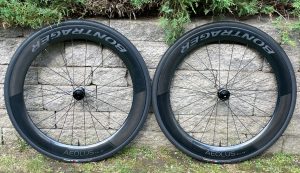
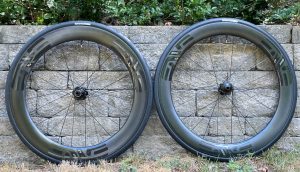
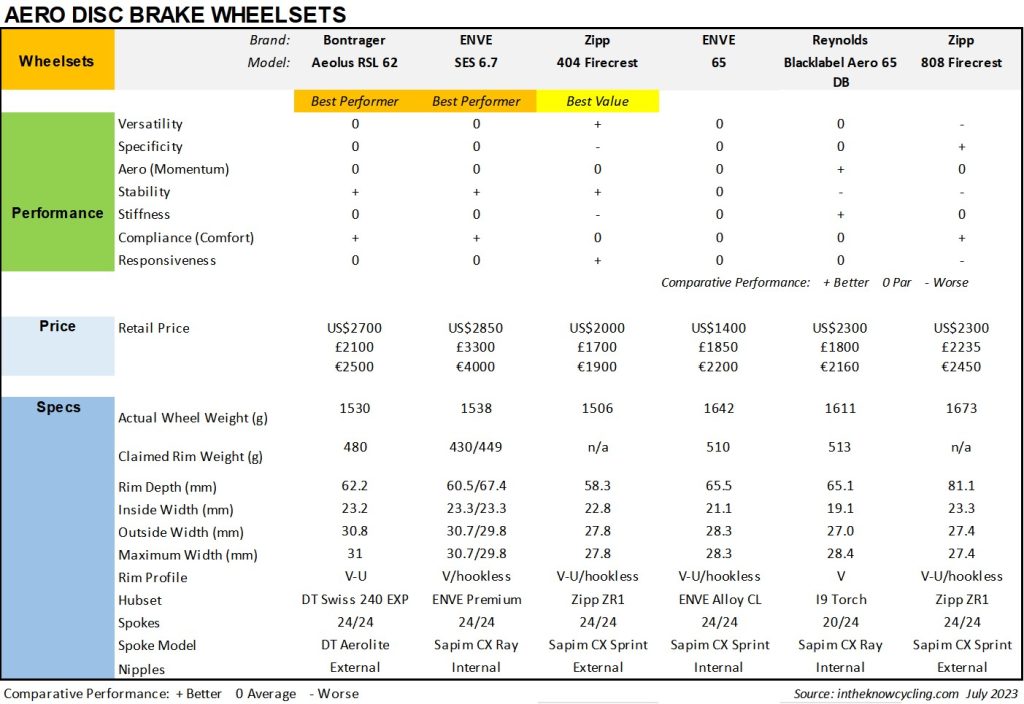

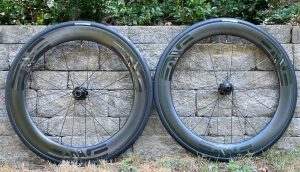
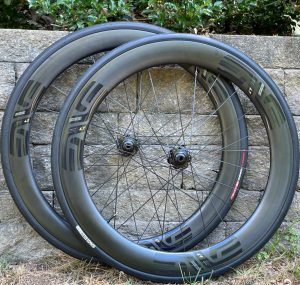
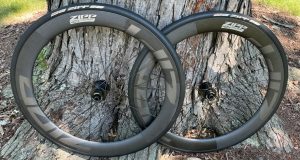
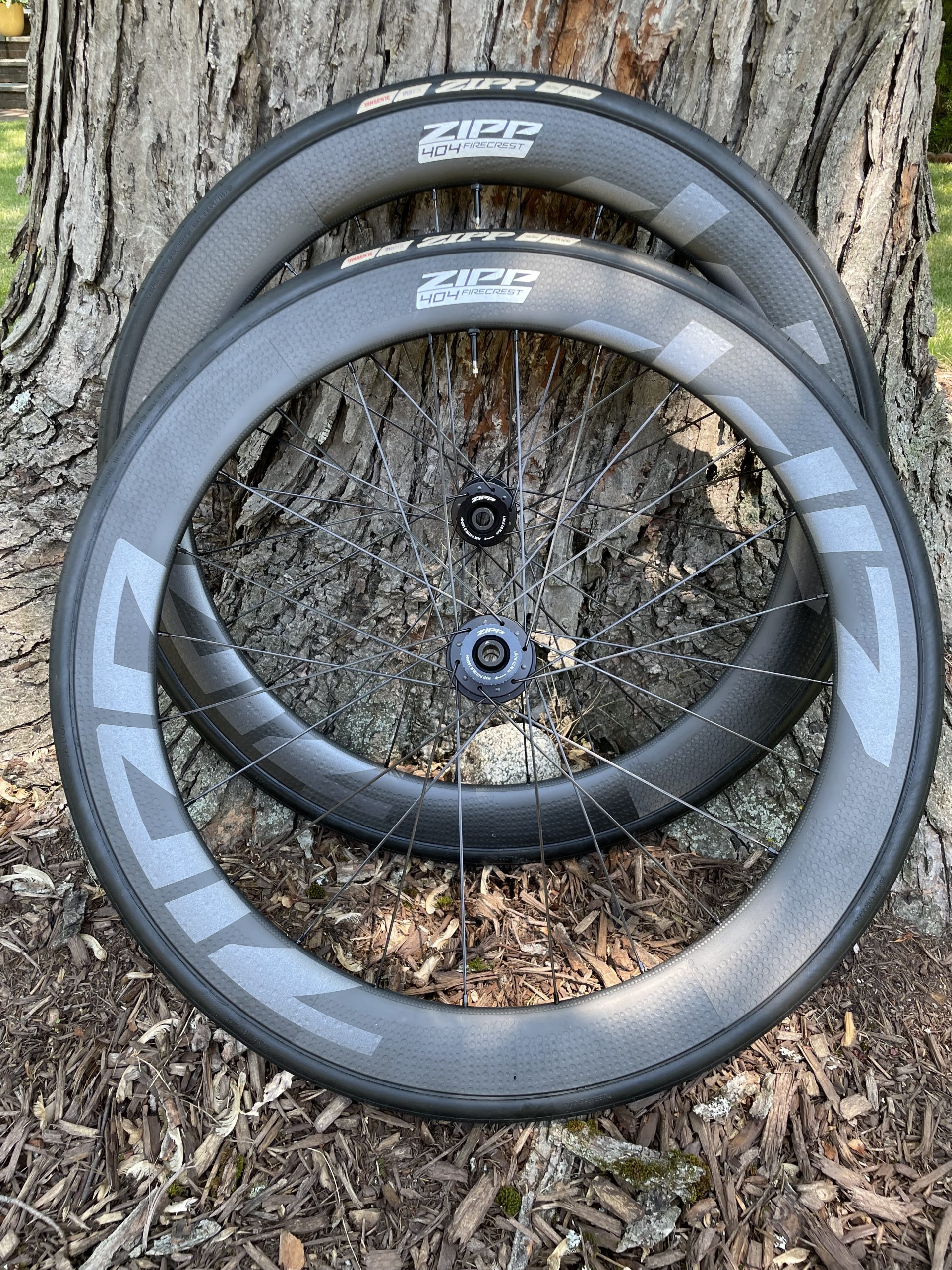
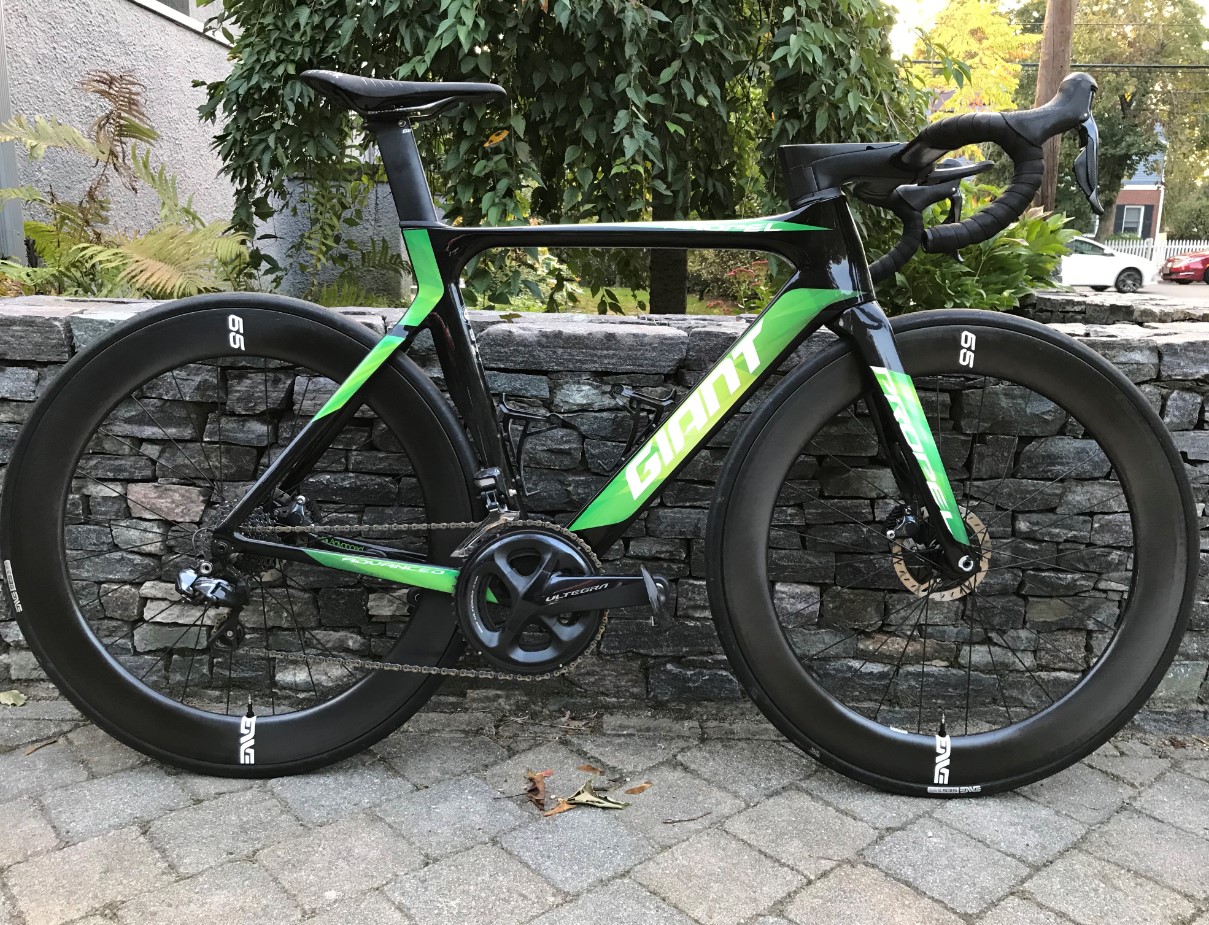
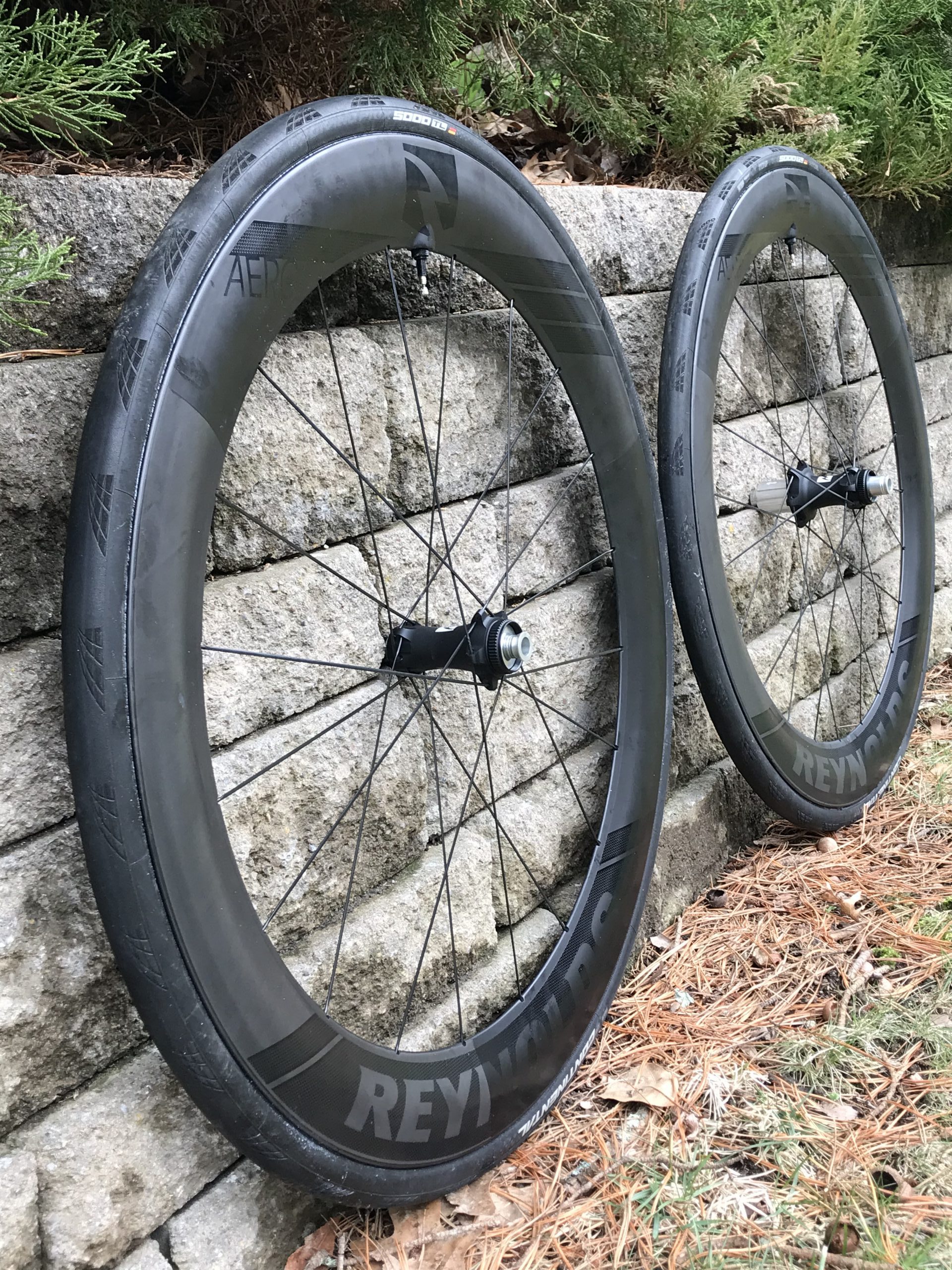
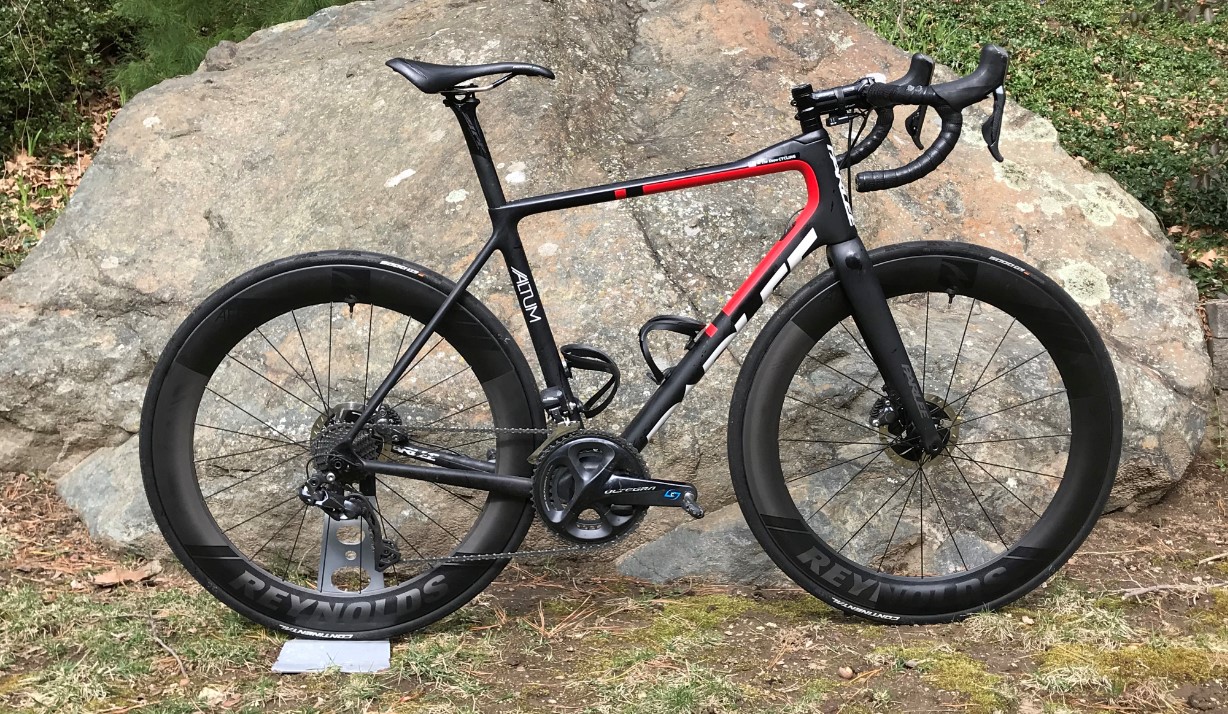
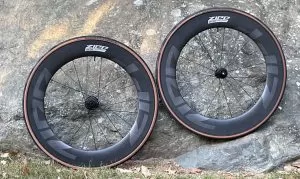
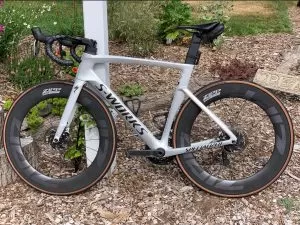
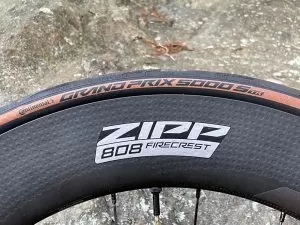

Hi Steve! Great review…spot on! My take on the Roval 64s is exactly as yours. This confirms my credibility on all your reviews. Keep up the great honest work!
Thanks Eric.
Rasssssp….I have set of Roval CLX50’s on my madone 9…and they were initially the cause of serious issues.
Very funny story will follow. After just getting them I used them in a criterium heading for first(not a word of a lie) the front of the bike started to wobble. I had to back off it was scary. This happened when gunning it in training and in few more races….I thought it was my set up or some sort of oscillation issue causing the bike to shimmer. The Trek shop pointed the set up out and the commission salesman got me to change my set up by swapping out the integrated bar/stem to another that was shorter at a cost of $1000. Problem solved..Nope.
A bit of investigation via youtube and Google had my buy a Silca Speed balance kit for $60. Once i got the weight balance sorted….these wheels transformed and morphed into a different thing altogether.
The brake tracks are average, and in the wet very shoddy. But the wet never bothers me as I don’t ride in it. I do get a tad of flex out of the saddle up hill doing efforts…
But these are now a very compliant wheel, and they handle. I raced them on Goat Tracks crits and in Criteriums held on motor racing circuits. Their lightness makes for snappy acceleration. I can hit 1450-1500 watts in a sprint. Im not the worlds fastest, but its enough to test a set of wheels. On the flat i don’t get flex that is noticed. The hubs are really nice. I have Chris Kings on my Enve’s. I have other wheels i use regularly to compare against.
I have Bontrager & Enve wheels. Did have 4.5’s. I have 7.8’s on my TT bike. I have the XXX4 on a Madone SLR. They are stiff that’s for sure. I put the Speedbalance kit on these too.
It should be noted that the Enve’s don’t need balance kits. That’s because I think they add weights to where the bladder is removed from the rim opposite side of the valve hole.
I have lots of bikes and bits, no allegiances. I just love bikes. When reading this I thought Mmmma bit hard on the Rovals. I cant say they are as good as the Enves or others, but if retested with a balance kit on….they may get a bit more love. I have no problems with them. I prefer them on two crit circuits that are Goat tracks over my Bontragers.
My point is that a lot of Wheel manufactures don’t send product out balanced. If you balance unbalanced wheels…..there is a noticeable difference in how they ride. The Roval balancing out of the box is atrocious.
I’m surprised to read your findings on the Roval CLX 64’s. Coming of a pair of handbuilt Enve 4.5 G2 (from StradaWheels which do very nice work) I most certainly know how a reference wheel should ride – flawless with no flex. Now although I don’t have the 64’s, I do have the CLX 50’s (on S-works Tarmac SL6) and I can honestly report that wheelset rides very much like my old custom build 4.5’s. So kinda odd there’s such a big difference between those 2 wheelsets…?!
In addition, I’m riding tubeless with a pair of 28 mm S-works turbos. It took me 2×10 minutes to install without any fuzz. I used Schwalbes tire blaster to fit the tire – succes on first short front and rear without any extra. Added the milch, span the wheels, installed and gone. Zero issues to date (14 days now). It was very easy…
I’m not a Spesh fanboy – at all – but I do like to highlight products that just works. And the CLX 50’s are very well made. So maybe sonething was wrong with the pair you borrowed? For what it’s worth, I did send my Enve’s to a rebuild since they out of the factory was so soft they did rub the brake pads constantly. After the rebuild the issue was gone. So soft wheels can also happen to them too… Just saying
Thomas, not sure what to tell you. We evaluated different models of Roval and ENVE than what you’ve ridden so maybe that’s part of it. Also, ours came from the company rather than a wheelbuilder. Glad to hear your tubeless install went well. I’m not the only reviewer to report issues with the Roval tubeless install. In one review, Roval spoke to some issues they had with plugs they use instead of tape. Perhaps they’ve straightened that out for your new CLX 50s. Cheers, Steve
Great review as always Steve and very easy to follow. Thank you for continuing to educate all of us. What are the key differences between Aeolus xxx and Pro series. What will you loose by going with the Pro vs XXX.
Ahmed, The Pro series uses the last generation Aeolus rim molds, with a lesser carbon, a heavier and lesser performing hubset, all (versus some) made and assembled in Asia, for about $900 less. I’m evaluating the Pro 5 db wheelset now and performance – especially responsiveness, acceleration, comfort – not anywhere near the same level as the XXX4 or XXX6 I reviewed recently. Stiffness on par. Braking on the last gen rim brake Aeolus wheelset was subpar whereas the current XXX generation braking is excellent. Steve
Hi Steve, thanks for your articles! I have read the Trek white paper and separate reviews for the XXX wheels, but you and your team appear to be the only ones on the web who have actually ridden and reviewed both the XXX 4 and XXX 6 wheels. My riding profile is similar to yours described in the article, so I’d like to hear your opinions for choosing between them for use as an every-day-wheel. Did you feel significant differences between them for: aero/speed, cross wind stability, responsiveness, or “overall joy to ride” that would make one a clear choice? Or, did you feel it is down to a matter of preference with small differences?
Hi Peter, Thanks for the feedback. The XXX 6 and XXX 4 (and the XXX 2, which we also rode and reviewed) are different on the characteristics you mention. The XXX 6 are faster than the XXX 4 but the XX4 are clearly better in the crosswinds and in their responsiveness. For the kind of riding I do, I much prefer the XXX 4 to the 6. If I were racing tris or TTs or riding a lot of flatter terrain, I might prefer the sheer speed of the XXX 6. Steve.
Help keep our reviews free of ads and bias by buying your gear through links on the site. Thank you
Hi, Steve,
Do you know if there are many differences between Cycleops PowerTap Carbon Enve G3 46 mm and ENVE SES 4.5?
I think in first case they are older model and using same profile 45 (or 46) in both wheels instead of combine 56/48. But, aparting from that, could behaviour and quality be very different than ENVE SES 4.5 you tested some time ago?
Thanks for all the effort maintaining this website with high quality content.
Kind regards,
G
Gustavo, probably very different. The ENVE 45 is three or four generation old wheelset. ENVE brought in a new engineering team to design the SES 4.5 and its updates so its aero performance, braking, width/comfort, etc. are all different. With a different hub, the stiffness is probably different as well as the G3 hubs have a reputation for not adding much stiffness to the hub-rim-spoke mix. It’s also quite an old hub and Powertap was recently sold as Cycleops wasn’t putting any development money into the hub power meter platform instead focusing on the pedals and not too successfully I might add. And ENVE also developed the SES 5.6 as an update on the SES 4.5. So while I’ve never ridden the wheelset, I’d expect its a lot different, and probably not in a good way compared to the SES 4.5 and other, newer wheelsets that I’ve reviewed here. Steve
Thanks, Steve. You stated G3 hubs could be a disadvantadge. I saw there is a SES 4.5 version with Powertap G3 hub. Are the comments the same that for ENVE 45 or in this case hub could be more reliable because they are newer? Do you know which generation could be Powertap G3 ENVE SES 4.5? (I asked in one shop and they said they were tubeless ready, but couldn’t confirm the same information in the web…)
Gustavo, Sounds like you are getting bad info from whatever shops or sellers you are talking to. Beyond what I’ve already commented on above, here’s what you need to know to make a good decision.
– The ENVE SES 4.5 rim brake wheelset is not tubeless ready. Never has been and likely never will. ENVE is not doing any new development on that wheelset, having moved on to the 5.6 as its successor
– Powertap was doing development on a G4 but stopped it last fall when its parent Cyclops started looking for a buyer for the business
– SRAM bought Powertap from Cyclops and will integrate into their Quarq power meter business
– Quarq may resume development of the G4 but not likely until after they revamp the overweight, disposable battery operated Powertap pedal system which was the main reason they bought the business.
– ENVE SES 4.5 wheelsets with G3 hubs are made by independent wheel builders. Each independent wheel builder builds to their own standards so there is no way for me to evaluate how good a build it is. The rims and hubs are knowns. How they are built could affect their performance, good or bad.
I don’t see a lot of good reasons to buy a hub-based powermeter on a last generation wheelset unless you can get it at half the price of what a current wheelset with a more versatile crank or pedal based power meter. You are making too many performance and usability sacrifices and adding in a few unknowns. You’ve got my recommendations on wheelsets in the review above. You can read my review and recommendations of power meters by clicking this link here. Steve
Help keep comments and reviews free of ads and bias by buying your gear through links on the site
I can get ENVE SES 4.5 with G3 hub for 2000 dollars, but maybe if it’s a big risk with the unknowns you flagged.
Thanks for all the information.
Hi Steve, I have learned a lot from your website about selecting wheels based on one’s own profile and different priorities to ride fast. Thank you!
In the Best Carbon Disc Wheelset article, you chose Enve 4.5 AR as All Around Best Performer and 3.4 as an all around + climber. Since 4.5 and 5.6 weigh very similarly in the 1550g range, how would you compare 5.6 vs 4.5 AR for climbing? Also, while you stated that 5.6 handles crosswind excellently, I understand that as compared against wheels of 55-65mm. Would crosswind handling of 5.6 be comparable to that of 3.4 disc?
I am asking these questions since I live in the SF Bay Area where climbs often exceed 7-8%. I am riding 3.4 disc and definitely enjoy climbing on them, but I’m also lured by the aero advantage offered by 5.6 on flats (but 5.6 will not climb so well), so I am weighing the trade off between the two. Would love to hear your comments on this. Thanks!
Mark, The 5.6 doesn’t climb as well as the 3.4. You’ll notice the difference with all the climbing you do around SF. They both handle crosswinds well but if it is really blowing, I’d want the 3.4 underneath me for anything over 20mph of crosswind. If you are riding or racing in a flatter area (Palo Alto?), you’ll definitely notice the speed difference of the 5.6 for the same amount of power output. Steve
You can click here to link to Know’s Shop for the ENVE SES 5.6 to compare prices and order online from stores I recommend because they have the best prices, customer satisfaction records, and support for this site and our readers with the best deals.
Thanks Steve for your comments! Almost every ride I do has some steep climbing, plus crosswinds are quite frequent. With your comments in mind, I probably will just stick with my 3.4. Thank you!
Nice review.
May I know the Enve 5.6 you tested, is Chris King ceramic or steel bearing?
Peak Cake, The ENVE SES 5.6 rim brake wheels I tested only comes from ENVE with the Chris King R45 hub w/steel bearings. That’s the one we tested. The ENVE SES 5.6 disc brake wheels only come with the R45 CL hub w/ceramic bearings. Steve
You can click here to link to Know’s Shop for the ENVE SES 5.6 to compare prices and order online from stores I recommend because they have the best prices, customer satisfaction records, and support for this site and our readers with the best deals.
Hey Mate, currently run black inc 50’s disc and had the 3.4 rim brake on the previous bike. Both run ceramic bearings and both great wheelsets however found the Enve incredible for everything here and wanted something a little more aero. Got the 50’s and found them not as comfortable and a little prone to wind on the fast descents here (V shape) and it’s a little unsettling. I’m based in Mexico City most of the year so plenty of climbing but also in Melbourne, Australia and eventually back there and so (as you mentioned) it’s reasonably flat and rolling. Getting to brass tacks – I want to feel that comfort and performance again from the Envés esp in tubeless format. What would you be picking here? 3.4 discs or the 5.6? Yes, this is probably the longest comment in history but really value your opinion.
Denver, I evaluated the rim brake version of the SES 5.6 wheelset so can’t say for sure on the disc brake one but would expect it would be faster/more aero back in Melbourne than the 3.4 with much the same comfort if you ride it tubeless. Steve
Help keep comments and reviews free of ads and bias by buying your gear through links on the site
I’ve just found your site and it is wonderful, thank you for all your efforts. I wondered if you have any experience or thoughts on the new Campy Bora WTO 45 wheels? Thank you in advance.
Anthony, Thanks and welcome. I’ve only read about the WTO 45 wheels. I don’t think they are available for sale yet. If/when I am able to review them, I’ll add it to this post here on carbon all-around wheelsets. Steve
Nice to read a comprehensive and thorough overview of more than just one or two sets of wheels and without apparent manufacturer influence. I especially appreciated the detail in the differences between the Enve 5.6 and Bontrager XXX6. Waiting with bated breath for thoughts on the Bora WTO 60s, whose performance I’ve found puzzling (personal experience). Nice work!
Thanks Bob. I’m still working on getting the new Campy Bora in for testing. But now you’ve got my curiosity up 🙂 What are you finding with the WTO 60? Do tell! Steve
OK, here it is: Disclaimer – I am a total Campagnolo fanboy, especially of their wheels, which I have found without exception, to be the highest quality, most bomb-proof wheels I’ve ever ridden. They are built to perfection. I’ve owned neutrons, eurus, bora ultras (still have those), and now the bora WTO 60s. Because of my past experience with the brand, I did not hesitate to buy, sight unseen, the only set in the US (so I was told). BTW, switching these over to shimano/sram is an extremely simple operation, so one should not hesitate to get either campy or shimano freehub and just swap out as needed.
What I found, running these on a 2019 Trek Madone SLR rimbrake frameset, 2 negatives: they get blown around a lot. I was surprised at this, and probably spoiled from running mainly Aeolus 5s for the past 4 years. OK, whatever; they’re deep section, to be expected I guess. More concerning: massive rear brake rub, even under moderate efforts. To the point where I said there’s just no way Kristoff is using these wheels like this. Granted, the madone rimbrakes don’t have a wide range of adjustment, but I had the brake pads as far away as I could get them and still get enough braking power to stop. I haven’t experienced this much brake rub in, actually, ever. Unacceptable; I’m sending back to Campagnolo to see if there’s a problem with the build, hopefully can find an acceptable resolution.
On the plus side, the materials, the finish and overall appearance is typical campy: without peer. That’s all I got. Would love to see if there’s correlation from anyone out there.
Bob, Thanks for sharing your take on your Campagnolo WTO 60 wheelset though sorry to hear about their performance. I’ll try to get a hold of a set to test. Meanwhile, as you suggested, would be great to hear from other readers who have ridden the WTO 45 or 60. Steve
An update on my WTO 60 experience, and my conclusions vs. ENVE 5.6s: After a ton of back and forth between Campy USA, my LBO and me, I finally got the WTO 60s back in my possession to try them again with my Madone SLR, this time built up with a D/A 9100 group. Result: the WTO 60s no longer experienced the level of brake rub I noted with my campy chorus group. I think this was just a matter of being able to move the brake blocks far enough away without losing braking leverage at the lever. Another lesson in component compatibility, which seems to be much more a factor these days than “back in the day”. Things just are not as interchangeable as they used to be. OK, so end result is that I’m happy with the WTO 60s, they’re working as I would expect, which is to say, fast, smooth, and campy brilliant. THEN, I swapped back in some ENVE 5.6s (yes, I am wheely spoiled), and the difference was clear. The ENVEs were much more snappy, felt lighter, and ready to pounce. Like race wheels. I had previously weighed the WTO 60s at 1700g, the ENVEs are at least 100g lighter. Conclusion is that while the WTO 60s are typical campy – the most beautifully finished wheels you’ll ever own, with superb performance and an overbuilt manufacture, the ENVE 5.6s are staying in the Madone. They’re simply overall better wheels at going fast and racing.
I also experienced unacceptable flex with the Bora WTO wheels. I really couldn’t get the right braking performance if I moved the pads far enough away. I put my Bora One wheelset back on my bike and do not have any flex.
Noting your views on the CLX64, have you ridden the CLX32? Any views on those?
Peter, I didn’t care for the CLX 32. You can see my review here https://intheknowcycling.com/2017/08/30/best-climbing-wheels/. Steve
Steve, I switched from a 2007 S-Works Roubiax to a 2014 S-Works Roubaix Disc. I already am planning on getting the 2020 S-Works Roubaix Frame when they come out with a color that I like. I sold my Enve 3.4 with Chris King Hubs and my Zipp 404s because they where Rim brakes. I am now considering either the Enve 5.6 Disc with DT Swiss 240 hubs or the Roval CLX 50 Disc. I have no plans to tubeless. My biggest concern is having a wheel that is good on the flats, fairly easy to spin up and maitain speed, but not to much of a weight penality when climbing. What are your thoughts between the Enve 5.6 vs the Roval CLX 50? Thanks in advance.
Vince, I review the ENVE SES 5.6 above albeit in the rim brake version and the Roval CLX 50 disc here. Underwhelmed by the Roval, over the moon about the ENVE.Steve
Question about the Mavic Cometes – on the one hand these are described as + stiff, and on the other, slow to accelerate. I’m a heavy (210# +/-) rider, and wheel stiffness is a prime attribute for me.
Are these challenged because they are heavy (which I won’t notice), or because they flex? Mavic, on SOME of their wheels, uses really, really thick spokes, which helps – but on others, not so much.
Chris, yes, I think it’s their weight that makes them less responsive in acceleration. Steve
I’m very interested to see your test results for Campagnolo WTO wheels. The specs show them as lighter than competitors for similar size, and the Campys do not need a rim strip (I think), making the difference even greater, since the other guys never include rim strips in the weight specs. I think the WTO is finally a “modern” profile. Campy hubs are always fantastic.
Hi Steve,
I’ve been reading your website for the last 2 years. I learned so much. Thank you so much for putting lots of effort in it. I have three questions for you. It’s kind of chicken and egg question. being Aero is more important than the weight of the wheel but when there is a decision time it’s hard to pull the trigger. Would you at least share your opinion so I can make a better selection. Here are my questions:
[remainder of the message read but edited or deleted for brevity and relevance – Steve]
1- If I pick [wheelset A, which I’ve not reviewed – Steve] with 23c tires, would it be dangerous to descend from mountains with these wheels? I am a very fast descender(40-50mph) but not a quick climber (166 lbs 5-7″ FTP 215) usually around 8-9 mph. I live in the Bay area, California.
2. Which brings my second question. If you want to pick two similar wheels [A and B, neither of which I’ve reviewed – Steve] does little lower weight make any difference? I think [one] is more Aero than the other because the nipples are hidden.
3.And my last question is, If you say [A] is too deep for climbing and descending because the front tire is thin and it’s too deep sections for sharp cornering, go with all 40mm wheels; which of the below you prefer the lightest or the AERO one?
[Wheelsets A, B, and C, none of which I’ve reviewed – Steve]
Thank you and I look forward to your answer even though I can not purchase these wheels from your website. But I refer your site to many of my friends who can benefit from it.
Cha-tie, As noted in your comment above, I edited it down to your essential questions rather than a choice between wheelsets that I haven’t reviewed.
Answers here:
1) Riders have been descending mountains very fast on 23c and narrower tires for years. Equipment helps but technique is paramount.
2) Aero is more important than weight until you get up around 7% grade and obviously more important going downhill
3) I don’t buy your premise that a wheel is too deep for climbing or descending based on the tire width and I haven’t evaluated the wheels you listed in your original comment.
Thanks for your candor in noting that you are asking questions about wheels that you can’t buy through the site. You certainly aren’t obligated to support the web site. I try to answer all reasonable questions and comments without knowing whether you and others do. If you want to support the site, however, you can do so without buying anything cycling related using the links to Amazon, eBay or through a simple Paypal donation as noted in the GET MORE UNBIASED REVIEWS section in the sidebar of every page on the site.
Steve
I am stucked at making a decision to pull the trigger on either ZIPP FC 404 with texture brake track or the WTO 60.
The setback for the Zipp are internal is not 19mm and the wheelset is not tubeless ready. I been using 25mm GP5000 clincher. Thought of getting the WTO 60 as it is newer and the rear spoke layout is unique. I riding a Lynskey with full shimano R8050 di2 setup…Just cannot be seen to ride a shimano setup with a campy wheelset.
Headache!!!!
PW, for $300 more than the Zipp FC and the same price as the Campy, you can get the ENVE 5.6, the rim brake wheelset I found to be the best performer. It’s also tubeless-ready, wider than either and brakes very well. Steve
Hello Steve,
I am astounded by the work you put into this website! Great job…
I have been reading a lot of your research into carbon wheelsets and also the article above on the best aero wheels. I have a question about a wheelset I didn’t see mentioned anywhere on your website and wondered if you have any experience with them to date.. they are the 3T Discus C45. I have recently bought myself the 3T strada due frame set and these wheels attracted me as they have a 25mm internal measurement. Any input you have would be very helpful!
Thanks
Taz
Taz, Unfortunately, I don’t know that wheelset. While I hope not to light a brushfire with this comment, I don’t think of 3T as a leading wheelset company. There are other companies making wheels similar to this one with a 25mm internal width and for a road and gravel purposes that I’m reviewing currently. All are from companies that have established wheelset innovation credentials. If this type of wheelset is of interest to you, please check back in June or sign up to receive email updates or to one of my social media accounts to see when the review is published. Steve
The wheels were developed by Gerard Vroomen one of the founders of Cervelo. He definitely knows a thing or two about aerodynamics and that’s why I wanted to consider them. Although, now I’m looking forward to your upcoming review of similar spec wheels in June so I’ll have some other options! Thanks again..
HI. Question about the Enve 5.6 wheelset you tested? Are they heavy to spin them up? Are you spending more time or energy to get them moving? I’m riding Cosmic Carbon SL UST w/rim brakes. They feel easy enough to get moving to me. Also I’m using an 11-28 with the Mavics. I’m going to drown to an 11-26. Would that ave much bearing on how the Enve 5.6 would feel? Maybe make them feel a little slower to get moving?
Thanks
Matt
Matt, No, didn’t find the ENVE 5.6 slow spinning up which to me means accelerating. Actually found them one of the snappier wheels, i.e. quick accelerating wheels I’ve ridden. As to your cassette choice, a 28 tooth cog will make climbing steep hills easier than a 26 but won’t affect acceleration. One thing that will make a wheelset feel harder to get moving is what gear ratio you have it started in. If you are starting your acceleration from a dead stop or slow pace in your 53 tooth ring and 11 tooth cog, it will feel harder to spin up than if you have it in a 50-11 or a 53-16. Steve
Hi Steve. They arrived today! They are impressive. The detail to the packing, accessories, decals…. to be honest I’ve wanted these for some time. So pardon the excitement. I was able to mount the Schwalbe Pro One TLE 25CM in less than one minute. Front and rear were both very easy. (I used a nice pair of soft work gloves to assist.). The bead seats with a floor pump/charger. I like to dry fit tubeless before using sealant and these lost 2psi of air over 10 minutes. Added Orange Sealant and we will see if there any leaks over night. All that I need to do now is install new cassette and chain later today. I’ll wait for the roads to dry a little and spin these up. Ill come back with my unbiased thoughts.
Well I’m at a loss. Rim brake, ceramic hub and bearings. Very light wheelS. These are fast. I’m getting used to them. The thing I have a hard time getting used to is this…. I feel lazy. I can keep up my efforts with less watts. So yeah its messing with me. I think you are going to get some speed with these. Spinning them up to 28mph is kind of effortless. The challenge is keeping them there. In all seriousness. These roll smooth. Brake better than the Mavic’s. And have lots of speed in store. Maybe you can get the same results with Zipp? Or HED? All I know is Enve does something pretty special.
Yeah, “keeping them there” is up to you or maybe their new ENVE Legs product is worth getting to go with your new wheels. Enjoy ’em.
Steve I am very interested in the new Roval Rapide clx wheelset. It is disc break only and not tubeless. 51 mm front depth and 21 internal with 35 mm external width. 60 mm rear , 21 mm internal and 30 mm external width. Will you be reviewing this. I have seen some first ride reviews of the new Tarmac Sl7 with these wheels, and the reviews for the wheelset were very Positive. Comfortable, 1400 grams. Very stable handling, Good in the crosswinds, aero and quick to spin up. What do you think?
Ed, Honestly, it’s a head-scratcher. Clincher only and a front rim width that won’t fit between some/many forks. That said, Specialized does some very forward-looking things and others just to get a lot of looks. They are able to make speed/aero claims about the new Tarmac SL7 that they wouldn’t without that wheelset. I remember them doing something like that a few years ago with a new Venge that included a wheelset that they never really promoted in the aftermarket and was replaced within a couple of years with the CLX series intended for that market. I’m not doubting this wheelset, I just don’t know whether it’s the future or a flash. I’ll watch it but don’t have any plans to test it. Steve
Hi, Steve
Which one would you recommend the enve 5.6 disc or the reynolds aero 65 disc ?
Koh, We’re currently reviewing the disc brake models of the Roval CLX 64, Zipp 404 NSW, ENVE 5.6, and Bontrager Aeolus XXX 6 and will be better able to answer your question later this summer. Steve
Hi Steve. Thank you for the awesome reviews you put out. I noticed that Flo Cycling is offering some new wheels. I was intrigued by the Flo 77 AS Disc. Will you be reviewing it. I just finished building my triathlon bike and in search of some aero wheels. With races cancelled I have been using some basic shimano disc brakes wheels (RS770 I think) but now I am looking to upgrade. Thanks again for your great work.
JF, Thanks for your kind feedback. I’m unlikely to review that wheelset or anything that deep. Steve
Hi Steve,
Have you managed to try Bora WTO 60-s? Any feedback you can share?
Thanks for the great review 🙂
Juhan
Juhan, I’ve not tried those wheels. Steve
Excellent article. Yes, all these differences add up. When I switched from Zipp 303 to ENVE 4.5 SES, I gained 2 km/hr. 2 sumemrs later, I was at 3. How come? tens of thousands of kms on 303? well, simple: 303 are TOO SOFT and too AERO with TOO LOW ANGULAR MOMENTUM. I thought they were fast, but by 1990s standards.. First, the rears kept needing trueing every 2-3 months… ENVE? NONE IN # SUMMERS. even hitting bumps.. So internal spokes rule! Two the Zipps have AND ALWAYS SHALL yawww, S S S S every so gently. Never a straight line. Zipps behave like a wing foil, they WANT TO turn into wind.. Rider must ever so compensate… In a peloton one might notice it less, but cross winds and a low inertia make them oscillate. ENVES are ANCHORED, doing a V but the contact point traces a much much straighter line. Now, fatique is another factor. Hour 2 or 3 riding Zipps, constant adjustments fatigue. not ENVE. When I communicated the math and science to Zipp 303, no answer except ‘muffled’ NSW. BUT the NSW was only MARGINALLY better than the Firecrests, whereas ENVES crushed them. Now, clearly, DT SWISS rises the stakes with numbers slightly better than ENVE…
Yes, I even had the Zipp rebuilt with Chris King and Sapim, atching the enve, they still yaw..
In practical temrs, would you prefer a burst at 45 or 42 km/hr? syustain 50 for 1 km? 40 vs 38? 38 vs 36? As that is the difference that ENVE does. My next set for next bike, Disk, DT Swiss. But my ENVES will remain preserved on my current one.
Great review, best overview for wheels out there, thanks for the continuous effort.
About the NSW 404 you write “ Miles is down with the front hub but experienced some serious issues with the rear during his testing.” This makes me curious as I own a NSW 303 wheelset with the same cognition hub. After riding them for about 2000km the rear hub developed some play when the magnetic ratchet engages. This increased until I had zero engagement! The crank would spin without resistance. Upon consulting with Zipp and having done the routine maintenance to the letter, the customer service told me to replace the Magnetic Ratchet. Not a cheap replacement? It’s about 200$ here in Japan. After another 1000km the issue is back. Any thoughts? The wheel is in for warranty check now.
Christoph, Bummer! I don’t have any experience with the issue you are dealing with. Warranty is definitely the right path to go on. They should stand behind this. Let me know how it goes. Steve
Hi Steve
I have learned a lot with your blog/site.
I will buy a Tarmac sl7 in a few days and i want your suggestions for whellsets.
I need solution for mix cycling
Some climbs and flat.
DT Swiss Arc 1100 dicut 50’ ou Enve Ar Dic 4.5 ?
I will prefer 28mm tyres.
What is your opinion or other suggestions?
Many thanks !
Paulo, Between those two, I recommend the ENVE (review here). However, I wouldn’t suggest you choose a wheelset based on tire preference or width. I’d also recommend you better define your rider profile, goals and budget (see here) to help you choose the best wheels for you. Steve
Steve,
Curious if you have had a chance to try or have an opinion on the rim brake Fulcrum Racing Speed 40C‘s with the AAC braking. There are some good prices on them now and the depth and supposedly improved braking make them look like a good mid point between climbing with some aero.
Thanks again.
Chris.
Chris, I haven’t tested either the Speed 40C (rim brake) or 40 DB (disc) so don’t know how they ride. I’d categorize them shallow, narrow all-around wheels too heavy to be considered pure climbers. Steve
Thanks Steve. Makes sense. Great site and great reviews. Really appreciated.
Chris.